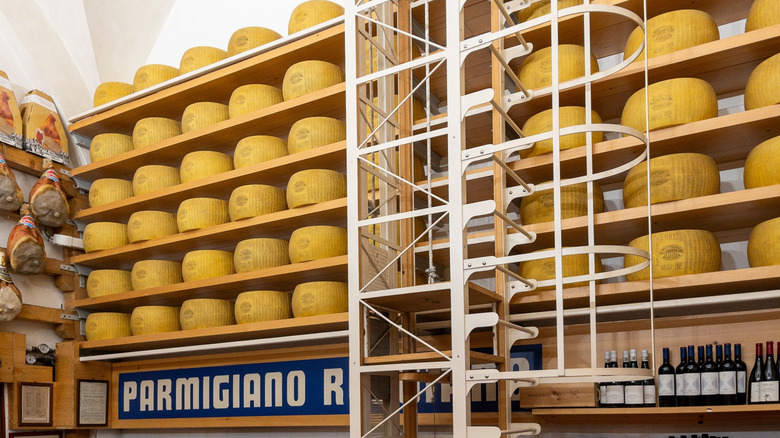Giada De Laurentiis Taught Bobby Flay An Important Pasta Trick That We Should All Use
Even the most successful chefs benefit from others' cooking tips and tricks — take Bobby Flay for example. A renowned celebrity chef and restaurateur commonly associated with Southwestern cooking, Flay has gained high acclaim on several Food Network series, creating unique, masterful dishes of all cuisines. Flay has cooked professionally since the age of 17, yet he ceases to stop learning and attributes one vital pasta-cooking technique he's adopted in his work to fellow Food Network chef Giada DeLaurentiis.
The technique in question? Sprinkling cheese, namely Parmigiano Reggiano, over al dente pasta before transferring the pasta to a sauce. This creates a tight bond between the cheese and pasta, allowing it to soak up the sauce afterward. While most finely-grated cheeses will work, Italian Parmigiano Reggiano, or its American sister Parmesan, is the most ideal due to both its texture and flavor. Flay holds the ingredient in high regard, telling Food & Wine, "It's like nutty salt, it makes everything better." But one tip: make sure you don't add all the cheese at once as this increases your clumping potential. Instead, gradually add and stir in the parmesan to the noodles to allow it to stay smooth.
Cheese's double duty as a binding agent and flavor enhancer
If cheese acts as an agent for noodles to better absorb sauce, do various sauces interact with the cheesy noodles differently? The short answer is somewhat, and the longer answer is it depends on the cheese and, plainly, the sauce you use. Thanks to other classic Italian dishes like pizza (my favorite meal of all time), we know that cheese and tomato sauce are a harmonious pairing. The creaminess of cheese balances the acidity of the tomato sauce. Similarly, when tomato sauce is combined with cheesy noodles, the flavors absorb one another, allowing for a balanced bite.
Pesto's herbaceous nuttiness also pairs nicely with cheese's salty richness. Working as a binder, the cheese soaks up the oils in the pesto, allowing the sauce to coat the pasta in a luscious manner. Users online suggest waiting until the pasta cools down to a warm, not hot, temperature to add the cheese to ensure it doesn't clump and the pesto doesn't split.
If Parmigiano Reggiano (or even Parmesan) is unavailable, there are several alternatives that will work as well. Grana Padano, another cow's milk cheese, is similarly granular, nutty, and salty, though it's slightly more buttery than Parmigiano Reggiano. It grates and melts well, making is ideal for thicker noodles like fettuccine, linguine, or tagliatelle. It also compliments creamy, cheesy sauces like alfredo as well as classic basil pestos. Another great substitute is Pecorino Romano. Despite being derived from sheep's milk, this cheese also offers a gritty texture and nutty, savory flavor profile. Complimenting rich sauces like a hearty Amatriciana or silky Cacio e Pepe, Pecorino Romano enhances pasta dishes by adding a distinct, sharp flavor.

